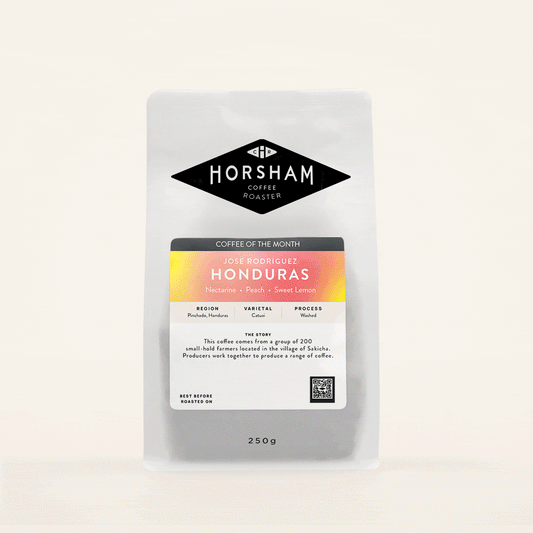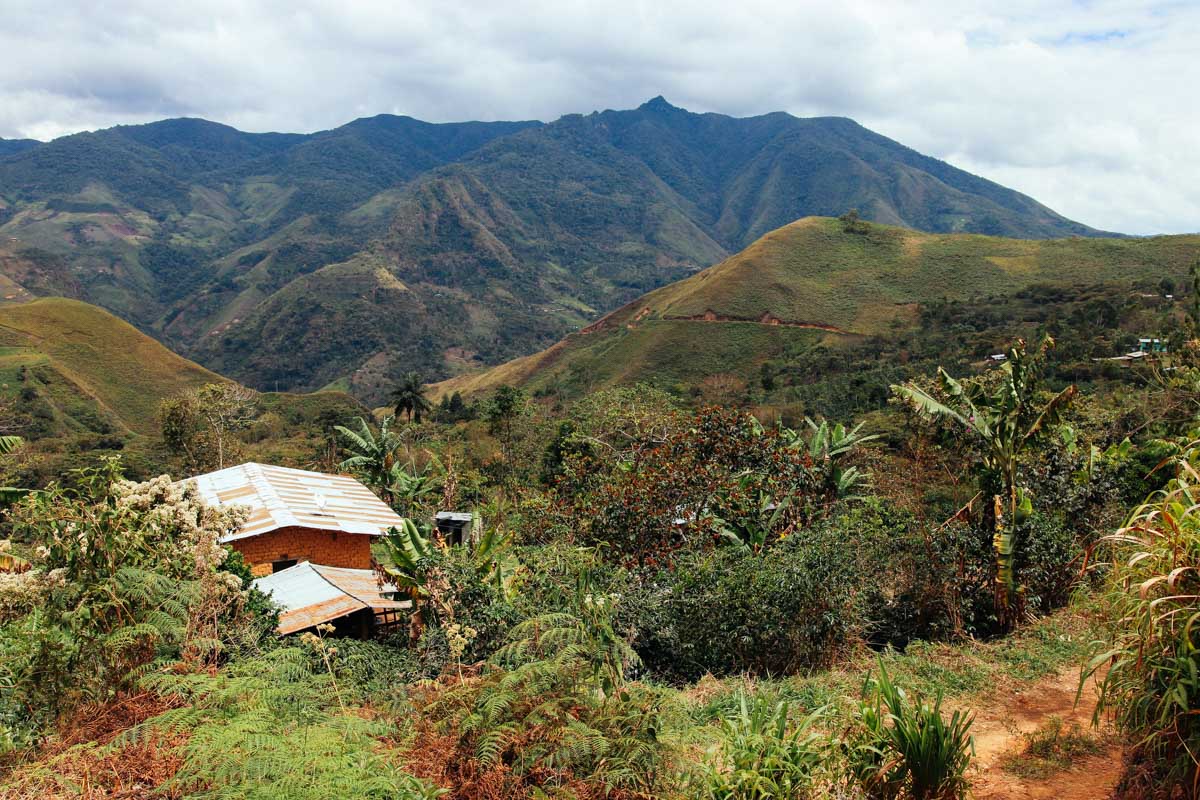
COFFEE FROM
Peru
Peruvian coffee has amazing flavour diversity and the altitude and processing tends to dictate the types of flavours on offer. Discover more about its history, processing methods and flavours on our Peru coffee guide.
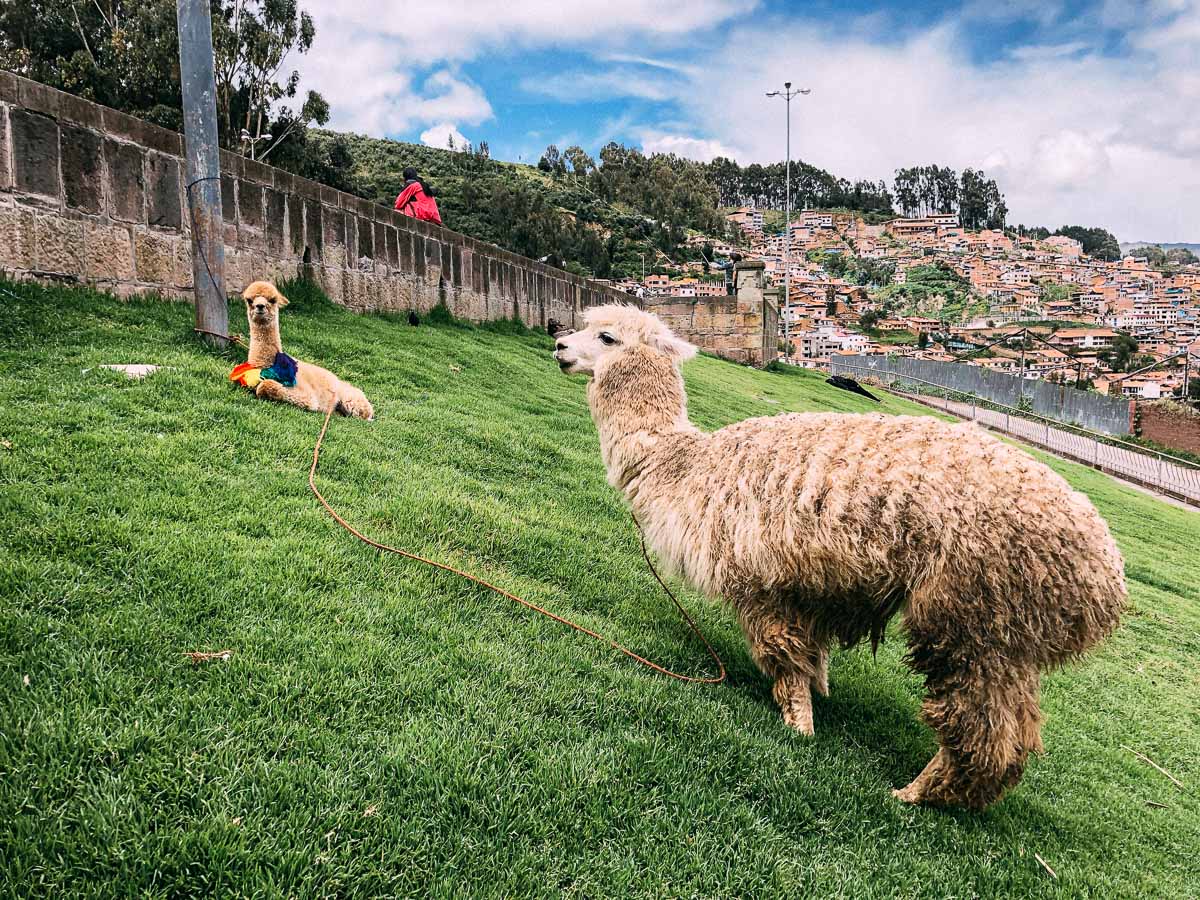
Overview
Peru is a country with a rich and sometimes very turbulent history, and Peruvian coffee is a big part of that journey. Since the 1700s, coffee has been grown throughout Peru, from the Amazon basin to the Andean mountains and the Pacific Coastline. It is currently the world's 9th largest producer of coffee, but it is only the 3rd largest exporter in South America and ranks 5th in the world.
When coffee first arrived in Peru in the 1700s, the global market was not particularly large, and most coffees were grown for local consumption. However, in the 1800s, when disease affected the growth of coffee beans in places like Indonesia and the surrounding countries, the coffee supply in Europe was disrupted. As European countries started looking for alternative sources, they discovered coffee from Peru. In the years since, coffee production became an essential part of the economy in Peru and many people now rely on the coffee industry to support their families.
When England accepted over 2 million hectares of land in place of an unpaid loan, they established a large number of farms and drastically increased the production of coffee in the country. However, when this land was sold off during the world wars, the coffee production in Peru was damaged, particularly as exportation was made far more difficult.
There are still a lot of issues with the farming of coffee from Peru. The average lifestyle of a coffee farmer is difficult, and most only have a small landholding of a few hectares. These farms are usually very far from developed areas.
However, the situation has changed for the better in recent years as the popularity of organic coffee has grown. Investment into more organic farms and fair trade networks improves the lives of coffee farmers and produces more amazing organic coffee. In fact, Peru is now known as one of the main producers of fair trade organic coffee globally. There are currently over 100,000 farmers growing coffee in Peru, and the country is fast becoming as well-respected as coffee-growing countries like Brazil and Columbia.
There is also a drive to provide fair pay and working conditions to women working in the coffee industry in Peru. In 2003, the Cafe Feminino initiative was set up to address the issue of women trapped in poverty in male-dominated environments where they have very little control over their own finances. A group of women set up their own coffee growing operation separate from the male-owned ones and they have been protecting the rights of female coffee farmers ever since. We regularly buy coffee from the Peru Cafe Femenino project.
Although Peru is still recovering from a rust infestation in 2014 that damaged their coffee-growing industry, there are still 855,000 jobs created in areas that would otherwise be very impoverished.
Nearly all Peru coffee is Arabica with a large amount of Typical varietal. Many producers now grow other varietals, and a strong emphasis has been placed on replacing old trees with varietals that offer good disease resistance and high yields.
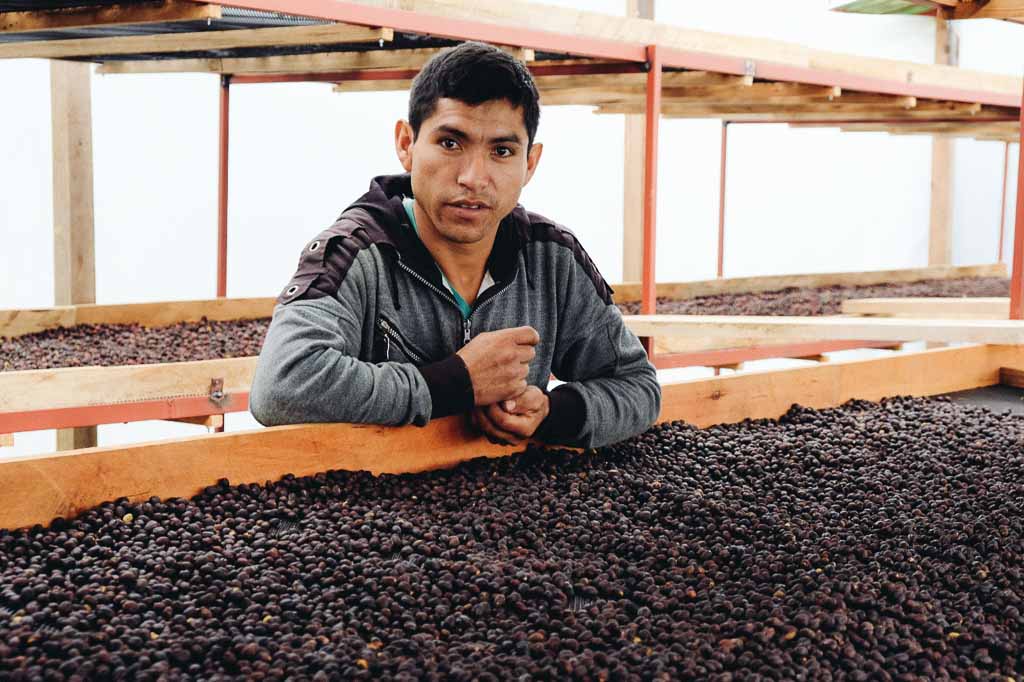
Processing Methods
The coffee in Peru is picked by hand, which does lead to some dangers, especially at high elevation. The main harvesting season for Peruvian coffee runs from June to September. Once harvested, the cherries will then be processed to remove the pulp from the beans before being sun-dried. The majority of Peruvian coffee is washed processed, and the many producers work with local co-operatives which will buy cherry and process the coffee on their behalf. Over the last 5 years there has been significant growth in the sale of single farmer micro-lots and on site processing. This means that producers are choosing to process their own coffees which means they can sell these micro-lots at a higher price especially if they are able to achieve cup scores of over 85. There has also been significant growth in natural processed and experimental processed micro-lots. Many producers are using carbonic maceration and extended fermentation techniques to create amazing, unusual coffees.
There is also a market for 'dung coffee' in Peru, which has become very popular in recent years. This type of coffee is processed by feeding coffee cherries to an animal of some kind (usually a civet). They then pass through the animal, and the dung is collected, and the coffee is washed thoroughly. The digestion process is believed to reduce bitterness in the coffee and create a more subtle flavour profile. This practice initially started in Indonesia with civets and has since spread throughout Asia and South America. In Peru, they use coatis, which are similar to small racoons.
Dung coffee is incredibly expensive and sought after by many wealthy coffee connoisseurs, but there have been issues around animal cruelty in Indonesia. Large farms of civets are forced to only eat coffee cherries, leading to nutritional deficiencies and are often kept in small cages. We believe these kinds of coffees should always be avoided, and if you'd like to find the best coffees from Peru, try to buy single farmer coffees and look for high cup score washed, naturals and experimental process coffees.
When preparing coffee for themselves at home, most Peruvians tend to drink it black, with many adding a little sugar. A simple metal filter is the most common method for preparing it, but some people also use a percolator or a French press. It is very uncommon for Peruvians to drink their coffee with milk.
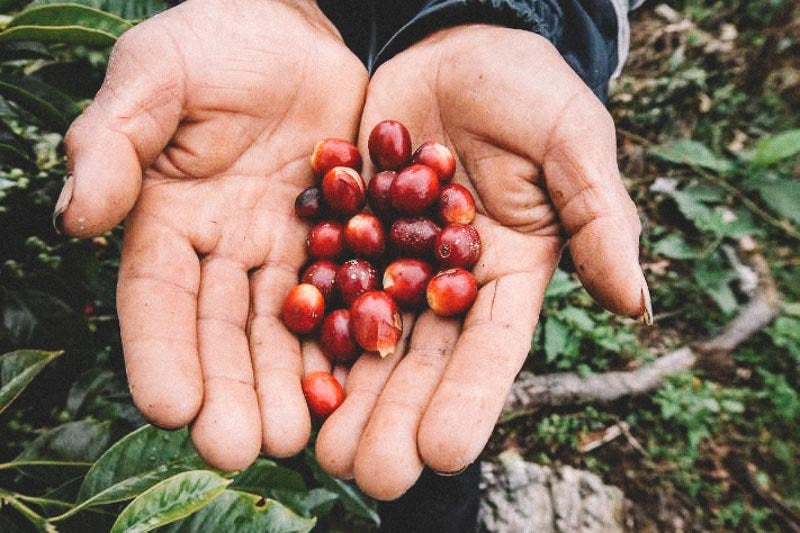
Flavour Profiles
Peruvian coffee has amazing flavour diversity and the altitude and processing tends to dictate the types of flavours on offer. High altitude coffees processed as extended ferment washed coffees can be very bright with amazing acidity and flavour notes that rival the best Colombia coffees. We've also had some fantastic natural processed coffees from Peru with bright, juicy fruit notes and berry flavours similar to the best Costa Rican naturals.
The bean profile of coffee grown in lower altitude farms is aromatic and flavourful with mild acidity. You will pick up on notes of chocolate and nuttiness. Some Peruvian coffee also has underlying citrus tones, especially in the smell and the aftertaste.
Coffee grown in higher altitude farms close to Cusco and Machu Picchu is more acidic. You will also experience a lot of bright floral notes and a rich sweetness to the coffee. The beans from these regions are the most sought-after. We've had some fantastic Cup of Excellence winning coffees from Peru, including a natural and washed coffee from the 2020 harvest.
Peru is one of the biggest producers of fair trade coffee in the world. Although they have had a difficult history, they have a strong dedication to ensuring that their farmers, especially female ones, are paid fairly and have the best possible working conditions. The coffee grown on these farms is fast becoming one of the most popular types of coffee in the world and it has a delicious flavour profile.
We buy a wide range of coffees from Peru, including some organic co-operative coffees, single farm experimental micro-lots and even Cup of Excellence coffees that score over 88 points! When available, our Peruvian coffees can be found in our collection of single-origin coffees.
Explore Recommended Coffee
-
Horsham Coffee Roaster
Coffee of the Month Subscription
Regular price From £10.25Regular priceUnit price / per -
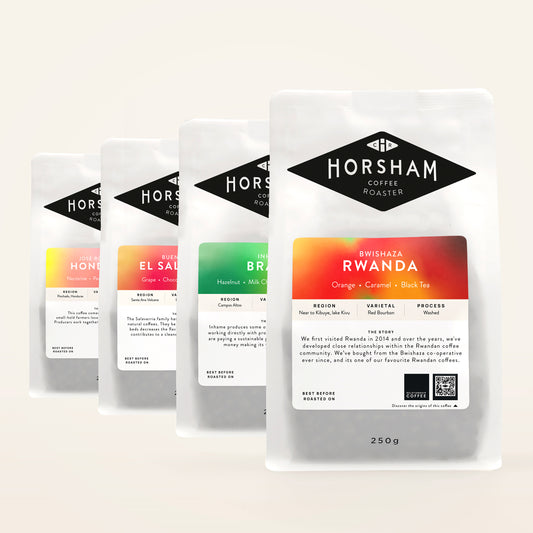 10% OFFHorsham Coffee Roaster
10% OFFHorsham Coffee RoasterSingle Origin Coffee Selection
Regular price £36.22Regular priceUnit price / per£40.25Sale price £36.22Sale -
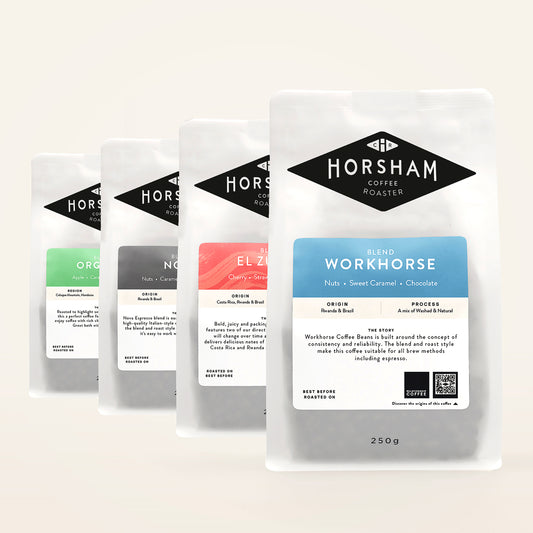 10% OFFHorsham Coffee Roaster
10% OFFHorsham Coffee RoasterBlend Selection
Regular price £35.00Regular priceUnit price / per£39.00Sale price £35.00Sale -
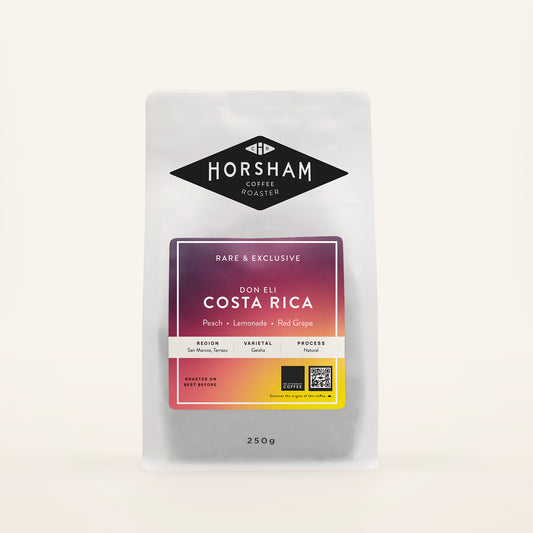 NEWPeach | Lemonade | Red Grape
NEWPeach | Lemonade | Red GrapeDon Eli Geisha Costa Rica | Natural
Regular price From £19.50Regular priceUnit price / per£0.00Sale price From £19.50NEW
